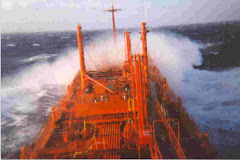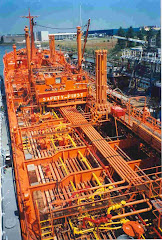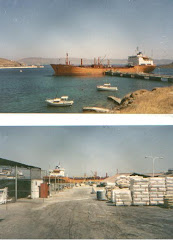TOP Ships has done some very timely restructuring over the past few months, selling vessels restructuring debt and terminating lease obligations. They have improved liquidity and contained leverage. They have increased secured employment cover.
Given that TOPS was in technical loan default with their asset coverage ratio's from the beginning of the year and there was pressure from activist shareholders due poor results, this served as an early warning system that has put them in an improved condition to face the current shipping slump. TOPS also succeeded to finance their newbuilding commitments backed with bareboat employment commitments for seven years.
Profits are still fragile, however, and the situation after financial expense would be close to break without the profits from vessel sales. The forward risks are decline in fleet value, problems with loan coverage obligations and potential charter renegotiations (and even defaults) in the weak shipping markets.
The tanker market picked up considerably from December 2007 especially in the Suexmax sector where TOPS had vessels open. Expected better operating results were slow to appear for TOPS until the latest third quarter earnings results. With the sale of their Suezmax fleet, TOPS is losing the benefit of the volatility and earnings in this sector of the market, which is so far faring better than dry bulk. The vessels, however, were mainly older units and needed replacement. The sales were timely. The biggest benefit of these sales came from the unwinding of their lease commitments.
TOPS has followed a conservative employment strategy reducing exposure in the spot market and increasing time-charter cover. This has allowed them to hedge their position with the bulk carrier acquisitions made at the peak of the dry bulk market last year. Prices and charter rates for these units have recently plummetted as one of the hardest hit sectors in the current shipping slump. On the new-building handymax product carriers TOPS has leased them to another operator on a bareboat basis for the first seven years from delivery so they carry no operational or market risk.
Of course, TOPS does carry counterparty employment risk on both the time charters and lease agreements that could come to roost if market conditions remain weak for a prolonged period ahead, but it would be hard to fault them for their timely efforts to increase secured income in view of their level of debt and newbuilding commitments.
Costs at TOPS remain high. Latest accounts show continuing increases. With a smaller, leaner fleet and tough times; this is definitely an area where management should focus.Another area of weakness in the past has been investor relations.
Looking from the outside, it appears that relations with activist shareholders were not the best. Perhaps these investors would have reacted differently if TOPS had taken a different approach. TOPS might even have benefitted by some new outside BoD members. More diversity on the BoD and in their management could potential assist in strengthening their strategic commerical outlook and opening new opportunities ahead.
I have been envisaging the possibility of a share repurchase program with the very low level of their share price. TOPS officially announced a US$ 20 mio program over the next twelve months. This seems a very sensible solution, reducing the considerable share dilution from the two efforts to raise capital over the past 12 months and taking advantage of very low share price.
Generally it has been a constructive year for TOPS and the management performance has improved considerably.








